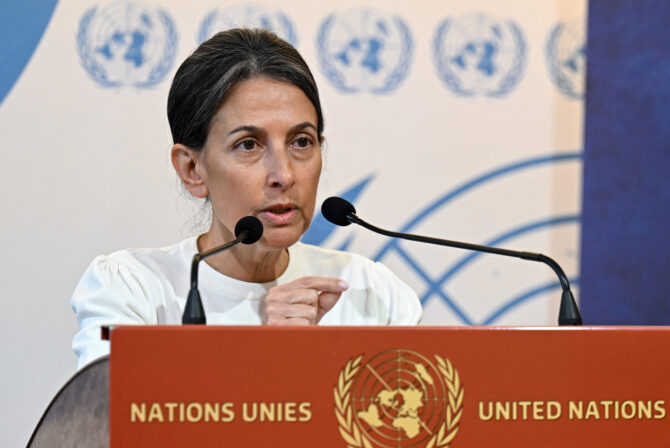Two years ago, a blind couple in Missouri had their newborn taken away for 57 days because the social services felt the parents couldn’t possibly care for him. When I wrote about it on my blog, a reader reached out to me about her own experience growing up with a mother who had polio and raised five children from a wheelchair. I sat down and talked with that mother, Dena Gordon, who has a Master’s degree in psychology, has been a computer instructor and travel agent, and made aliyah to Israel in 1990.
Tell me about your illness and recovery.
I was born in 1943 and contracted polio when I was 2 1/2. My generation of polio survivors was lucky. We were influenced by Nurse [Elizabeth] Kenny, an Australian who revolutionized polio treatment by having patients exercise their paralyzed limbs. At first the paralysis extended up my back and affected my arms. By the time I entered school, my arms were fully functional and I could walk with crutches and braces. People were astonished by my recovery.
Did you go to a regular school?
No one had heard of inclusiveness back then, so I attended the Spalding School for Crippled Children. My parents sent me to the Chicago Jewish Academy for high school. The city threatened to take me away from my abusive parents, but nothing came of it. I loved the school.
Did you have any qualms about motherhood?
Even though I didn’t know anyone who had done it, I figured I could manage. My mom was one of the “polio moms.” Their children were the last generation to contract the disease, and they were raised to believe they could do anything. My mom was a tiger when it came to teaching me to be independent.
My OB didn’t know what to make of me but I didn’t trust doctors, who had subjected polio patients to experimental procedures and surgeries. Giving birth was easy. Because I lacked the muscles in my lower body, there was no resistance.
 When did you give up crutches and move to a wheelchair?
When did you give up crutches and move to a wheelchair?
Being in a wheelchair has a stigma: We say “wheelchair-bound,” and some even refer to their chair as a prison. Walking was considered a mark of independence and normalcy. I only used the wheelchair outside when I needed to go long distances. But what I did with the crutches can’t really be called walking, and it always took enormous concentration.
When my oldest daughter was 6-weeks-old, I fell and broke my pelvis. I began to use the wheelchair indoors. Suddenly, my life changed completely. I felt like I could fly. I would hold and nurse Ariela with one hand and wheel with the other. Then I developed a harness–I should have patented it–to keep the baby strapped on and allow use of both hands.
Living in a wheelchair means I can’t visit homes where I need to climb stairs, but I feel free. I have learned to ignore the stigma. For me the goal is getting from point A to point B. A few years ago I finally got the courage to donate my crutches and braces to an organization that lends out medical supplies.
Tell me about your transition to motherhood.
I was totally petrified. It was bitter cold in December in Chicago, and I worried about Ariela freezing to death. My mother was around. She didn’t do housework or care for the baby, but just having her there helped tremendously.
Yes. Most women breastfed in my upper-middle-class neighborhood near the University of Chicago. A La Leche League Leader came to the house to help me with different positions. I haven’t thought about that in 40 years! Of course, breastfeeding meant that I didn’t need to go into the kitchen to prepare and wash bottles.
How do you think being in a wheelchair affected your kids?
My kids learn to do things for themselves that other kids don’t seem to do. That’s not a bad thing. Last year, when my husband got sick, they all pitched in as a team. You get more independent.
What about as toddlers?
Well, I’m not sure I should tell you this but you can make of it what you will. Mammals have a tone they use that makes their young stop in their tracks, and I dredged it up out of necessity. My kids didn’t run away, and they stopped what they were doing when I gave the signal. I cringe when I see young moms rushing into the street to rescue their small ones.
Tell me about your aliyah to Israel.
We came in 1990 when Ariela was in college. My second daughter, who was married, stayed in the US as did my son who wanted to finish school. My youngest were 14-year-old twins about to enter high school. Making aliyah is often hard for teens, but they had each other. My mother, who had been in excellent health, also came with us but died in 1992.
How does Israel compare with the U.S. in terms of accessibility?
When we first came it was difficult, but things improve every day. Local buses and inter-city trains are wheelchair-accessible. The train company even called me to ask whether my ride had been comfortable!
I have a car that I operate independently, with most of the cost supplied by the health ministry. When I was waiting for it to be ready, I relied on buses. The buses were equipped with ramps, but the drivers had never learned how to use them. After a few days every driver on my route knew what to do.
In the US, you see many more disabled people using public transport–sometimes carrying oxygen tanks! In Israel I now see more than one wheelchair on a bus.
A few years ago I heard a woman on the radio complaining that she couldn’t get into the grocery store. The owner offered to bring everything to her, but the woman said she wanted to choose like anyone else. Has the situation improved?
Not only can you go into grocery stores, you can use the bathrooms. There has been a sea change. People’s attitudes haven’t caught up yet, but that takes education.
What advice would you give to disabled women considering motherhood?
I’d give the same advice I would give to any future mother, especially single mothers: Get someone to be there for you. Go for it, you can do it.








